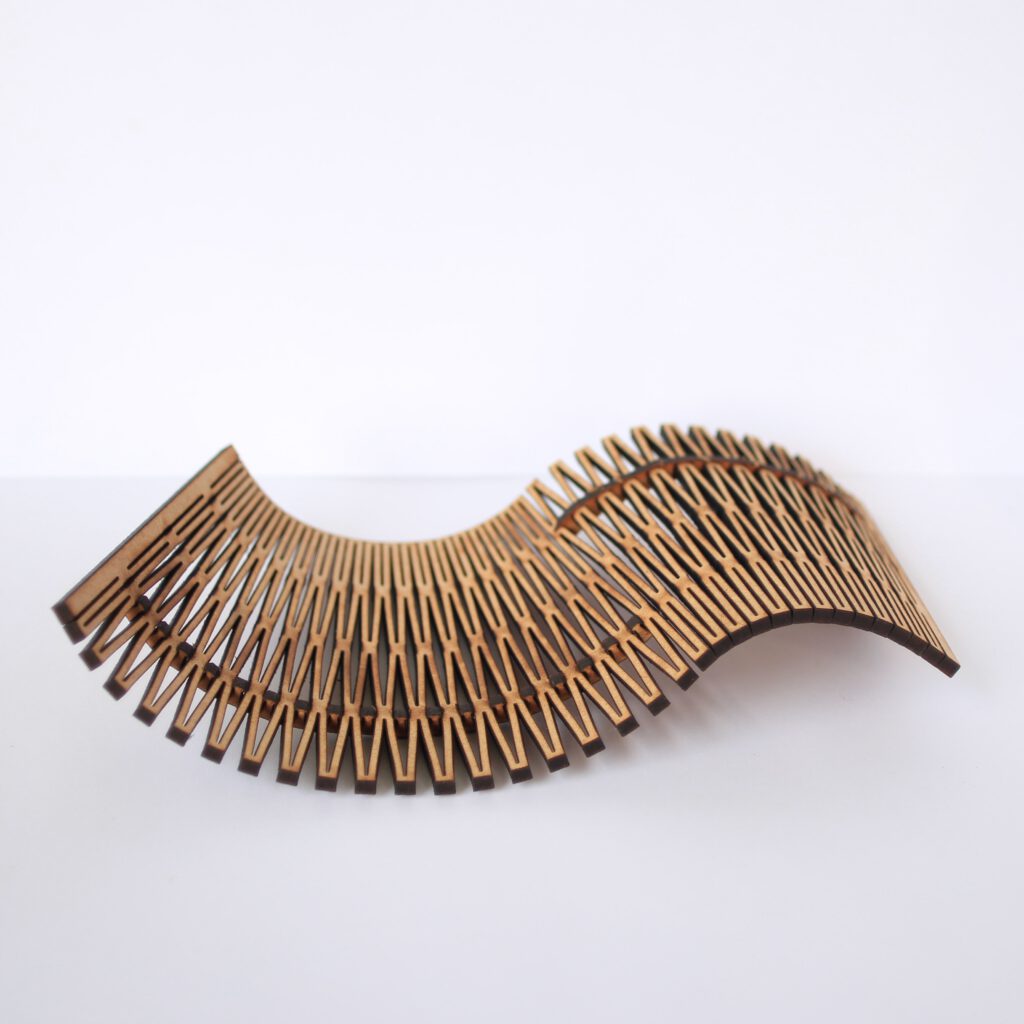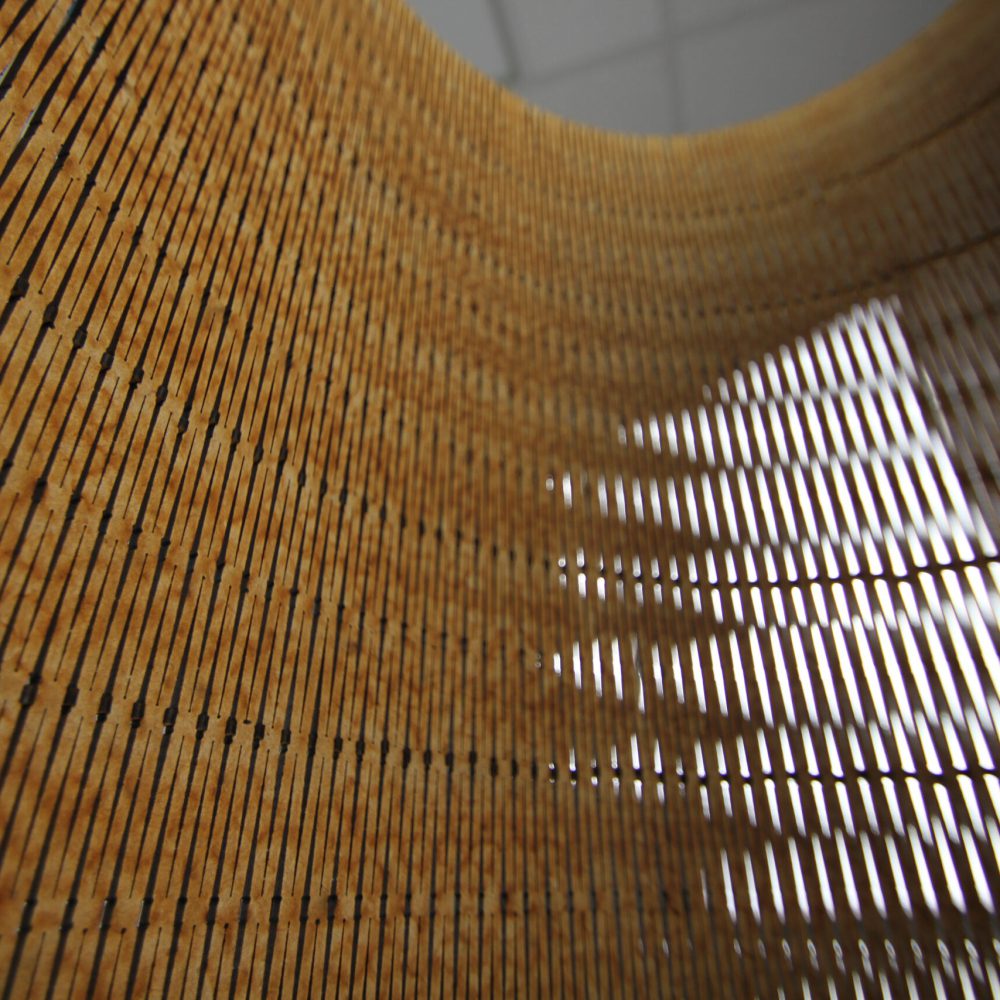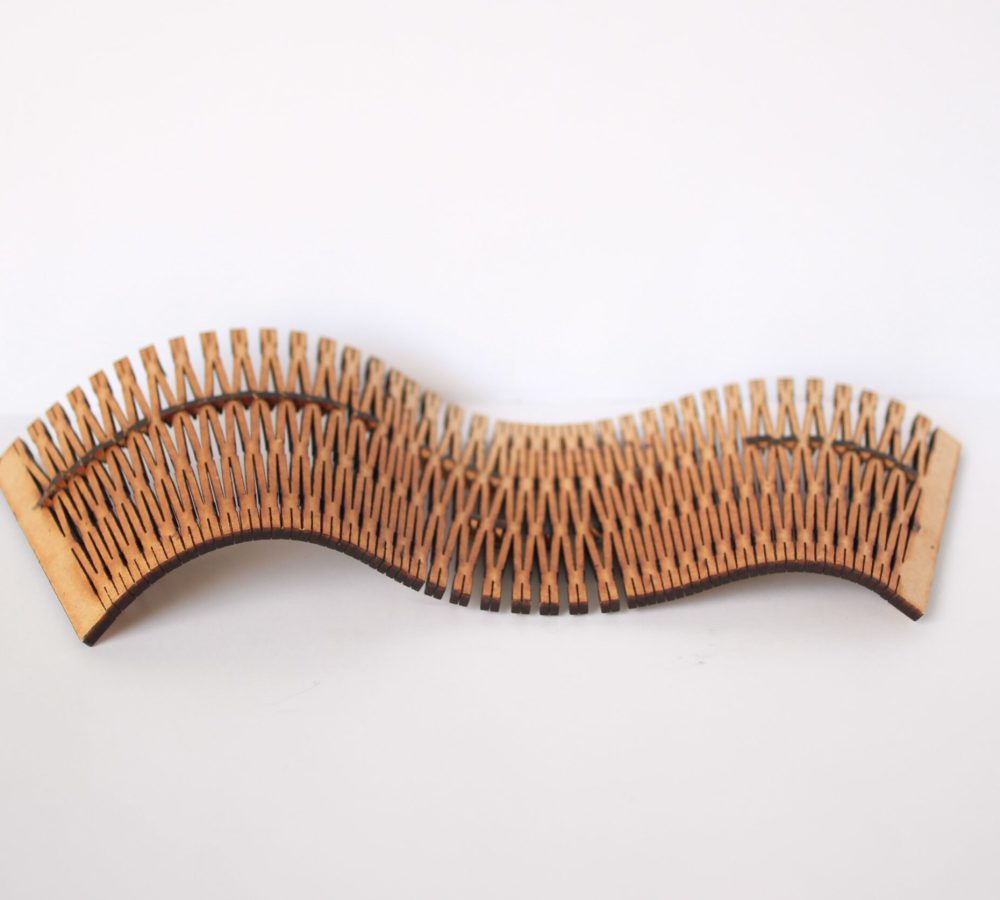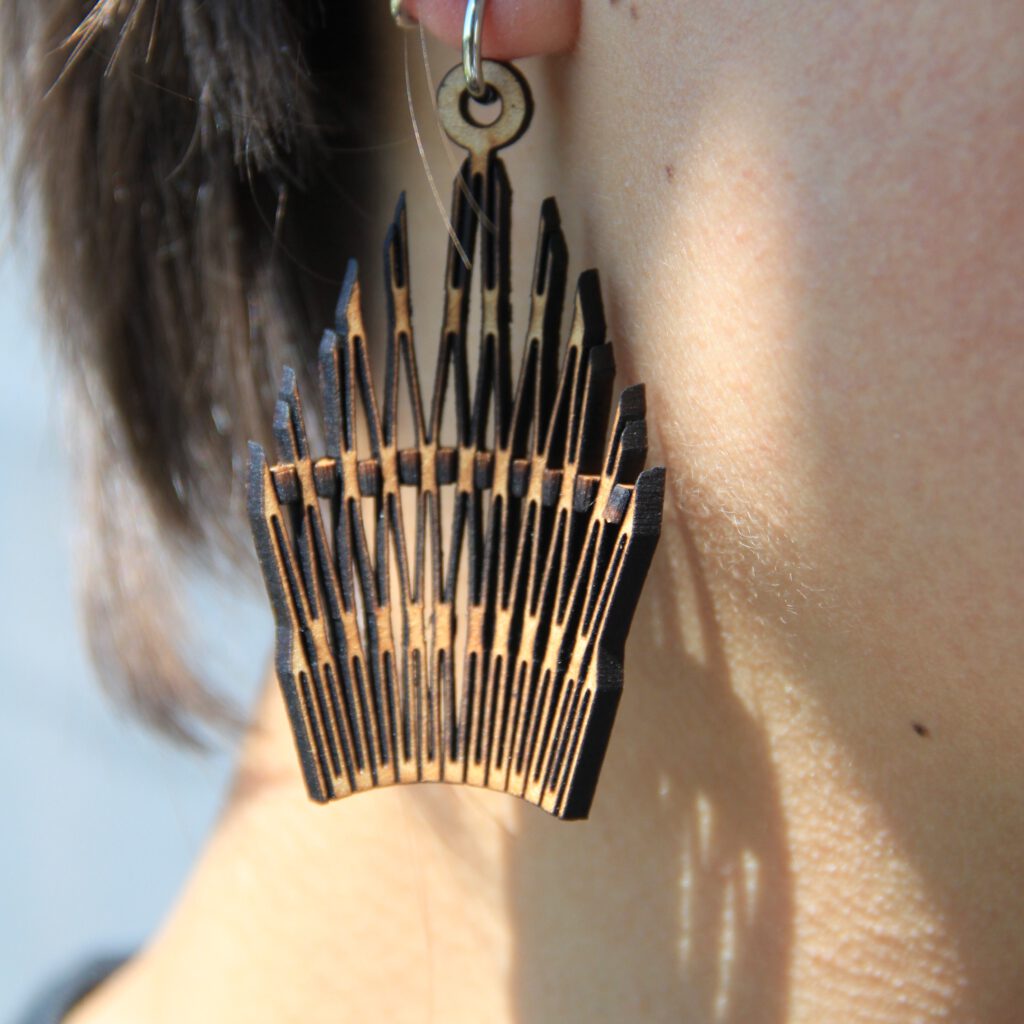

FBP;
LaserJamming; controlling the curve of lasercut design
Laser-cutters are increasingly used in fabrication, they have one main advantage: they are fast. However, the nature of the machine is that they produce flat sheets of material, and as such the aesthetics are surrogate of the method. This project takes research through design approach and investigates how we can break free of this flat form aesthetic. It develops a novel technique which consists of “jamming” wedges into laser-cut lattice hinges. A design editor was built to facilitate design of curves that are self-supporting and break free of flat sheet geometry.


This project started with the open idea of exploring laser-cutting aesthetics and techniques. Me and a laser-cutter in my student room travelled through an enormous mountain of samples which resulted in a technical prototype and showcase. I found that the approach to designing by making is what really makes me enthusiastic, however I did struggle with finding a place for my work to exist. Through my design process I developed something I found interesting, but in that first person exploration I lost track of my surroundings.
This project had a large focus on C/A, T/R as well as MD/C, a machine learning algorithm was trained to predict best results in a parametric design editor. For U/S I corresponded with two academic experts throughout the process. In the end the project revolved around a technical contribution and when it came to find a use case/value proposition there was little to be found (B/E).

